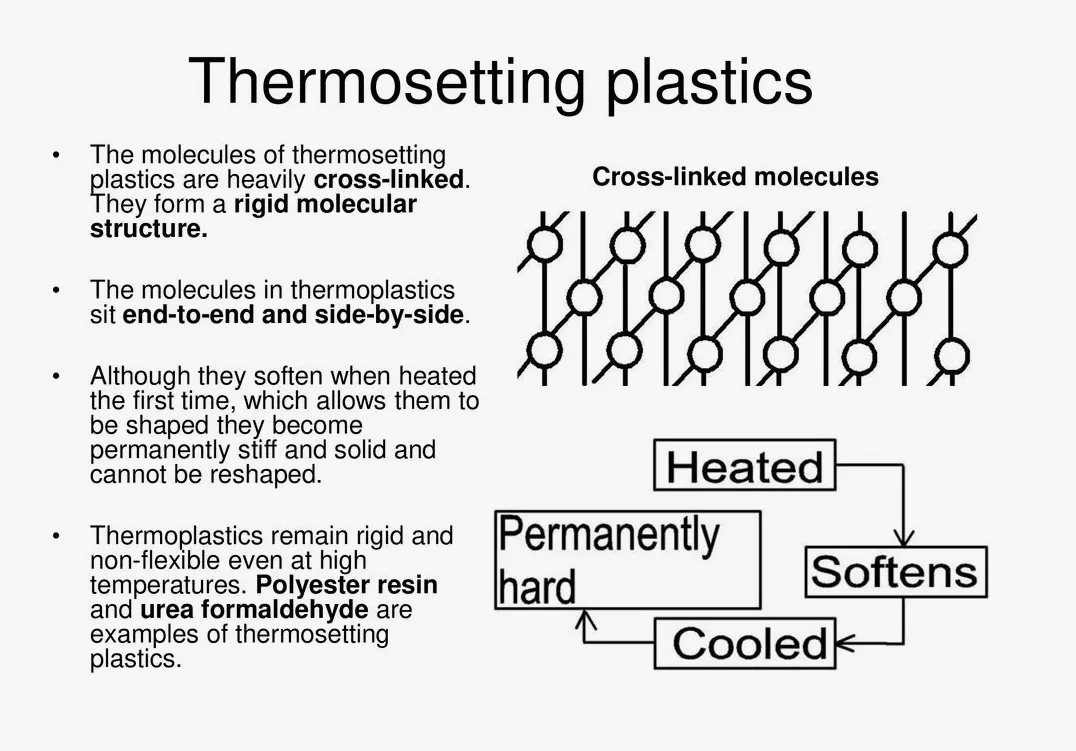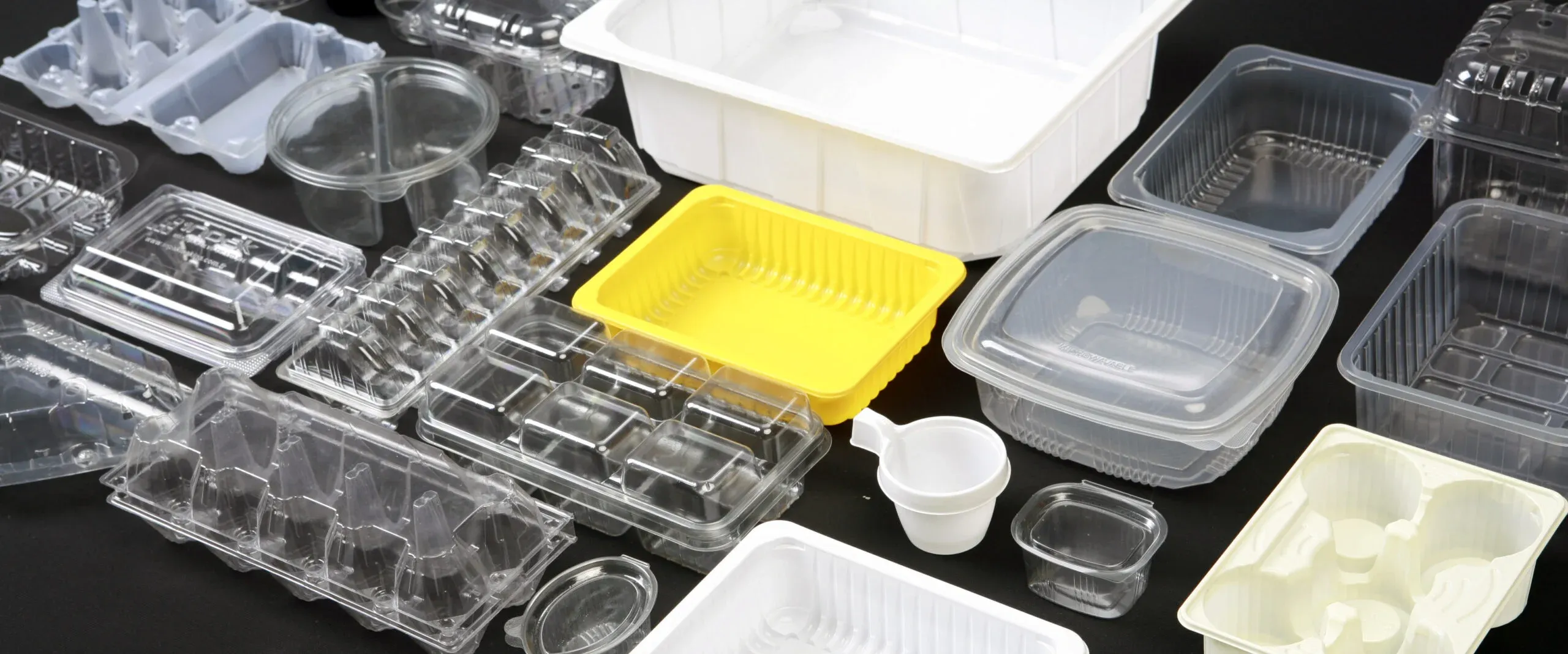In the world of plastic products, thermoforming plastics and thermoset plastics play their own unique roles. Although they are both the cornerstone of plastic product manufacturing, they differ greatly in how they react to heat, application scenarios, and performance in everyday use. A solid understanding of these differences is critical for engineers, manufacturers, and product designers as it will help them make the most appropriate choices for their respective projects.

Thermoforming is a flexible process that heats a plastic sheet to a soft state and then uses a mold to shape it into a specific shape. When the plastic cools, it solidifies and holds the shape of the mold. A distinctive feature of thermoformed plastics is that they can be heated and reshaped repeatedly, which brings great convenience to industries that require customization or pursue recyclability.
Thermoforming processes are mainly divided into two categories: vacuum forming and pressure forming. Vacuum forming uses suction to attract heated plastic sheets to a mold, and this method is often used for simpler designs such as packaging. Pressure molding, on the other hand, uses air pressure to press plastic into a mold to achieve more fine and complex design details.
Thermoforming is popular because it is both efficient and versatile. It enables manufacturers to produce a variety of products quickly and cost-effectively, which is particularly popular in industries such as food packaging, automotive parts and consumer goods. Additionally, because thermoformed plastics can be heated and reshaped multiple times, the process also helps reduce waste and supports recycling, an important advantage in this increasingly environmentally conscious era.
Thermosets: Built for Strength and Durability
While thermoformable plastics are flexible, thermosets are known for their strength and rigidity. These materials undergo irreversible chemical changes when heated, forming a permanent shape that cannot be remelted or reshaped. This makes thermosets ideal for applications that require high heat, strength, and durability. It offers high temperature resistance, excellent chemical resistance, and high strength toughness.
Thermosets are often found in demanding applications such as electrical components, high-temperature automotive parts, and building structural elements. Once cured, these plastics retain their shape and strength even under extreme conditions, making them reliable in industries where safety and performance cannot be compromised.
Products made from thermosets such as epoxies, phenolic compounds, and certain polyesters are valued for their excellent thermal stability, chemical resistance, and long-lasting durability. For example, epoxies are commonly used in coatings, adhesives, and composites in aerospace and wind turbine blades. This level of strength and reliability makes thermosets invaluable in high-performance, long-term applications.
Comparing Material Properties
Thermoforms and thermosets behave very differently due to their basic chemical structure and processing methods. Thermoformed plastics are generally lightweight, flexible, and easy to shape. Their ability to reheat means they can be reformed and recycled, making them an excellent choice for applications that require frequent adjustments or where environmental sustainability is a priority.
In contrast, thermoset plastics offer superior mechanical strength, chemical resistance, and durability. Once set, they can no longer be modified, providing a high degree of structural integrity. These plastics are ideal for environments that require materials that can withstand high temperatures, pressure, or chemical exposure.
However, thermoset plastics cannot be reshaped or recycled, which means they create more landfill waste once they reach the end of their life cycle. It also has a second disadvantage: poor thermal conductivity, which limits their use in certain applications that require good heat transfer. This makes thermoformed plastics a more sustainable choice in certain situations, especially in industries that want to reduce their environmental impact through recyclability.
Applications of Thermoforming
In the broad arena of industry, thermoformed plastics have become a favorite for manufacturing a variety of products with their unique flexibility.
Imagine that in the packaging industry, thermoformed plastics are like a versatile artist, able to be easily molded into clamshell packaging, trays, containers, and lids. These carefully crafted works of art are not only lightweight and economical, but can also be customized into a variety of shapes and sizes as needed, making them ideal for packaging food and consumer goods.
In the automotive world, thermoformed plastics are a tough warrior, used to make durable, lightweight interior parts such as dashboard covers, door panels and instrument panels. These parts are not only strong but also flexible, which is exactly what thermoformed plastics are good at. In addition, this process helps reduce the weight of the vehicle and improve fuel efficiency, which is an important factor that cannot be ignored in modern vehicle design.
The medical industry also favors thermoformed plastics, which are used to make sterile packaging for surgical instruments, medical trays and other disposable items. Thermoformed plastics can quickly produce large quantities of customized packaging, which is a field in healthcare where reliability and hygiene are crucial.
Advantages of Thermoset Forming
Thermoset plastics are like the tough guys of industry, especially good at performing well in high-stress environments. In the electrical industry, thermoset materials such as Bakelite and melamine are used to make insulating parts, circuit boards and housings that can withstand high temperatures and resist conductivity. These properties are essential to ensure the safety and performance of electrical systems.
In the aerospace and automotive sectors, thermosets shine, where they are used in high-temperature environments such as engine components and structural elements such as aircraft wings. The durability of these materials ensures that they maintain their shape and integrity under extreme conditions, which is essential to the safety and longevity of these vehicles.
The construction industry is also a big fan of thermosets. Materials such as epoxies have high tensile strength and chemical resistance, making them ideal for protective coatings, adhesives, and even flooring materials. These plastics can withstand severe wear and tear, making them ideal for long-term structural applications.
Understand the manufacturing process
Demystify thermoforming and thermosets. The thermoforming process is like a carefully choreographed dance. Plastics are heated to become pliable and then guided into a mold using vacuum or air pressure to form the desired shape. Once cooled, the plastic takes on the shape of the mold and the product is born. The speed and simplicity of the process make it a popular choice for producing large quantities of products quickly and efficiently. And any material waste can usually be recycled, which undoubtedly enhances its sustainability.
In contrast, the manufacturing process of thermoset plastics is more like a feast of chemical reactions. The material usually comes in a liquid or malleable form. It is placed in a mold, and heat and pressure trigger a chemical reaction that causes it to cure. Once the curing process is complete, the plastic becomes solid and can no longer be reshaped. Although this process is more complicated and time-consuming, it produces products that can withstand extreme conditions and have a longer life and strength than thermoformed plastics.Environmental Pioneer: Thermoformed Plastics

Environmentally friendly pioneer: thermoformed plastics

They can be heated and reshaped again and again. This ability to be recycled coincides with our pursuit of reducing waste and promoting sustainable development. For industries committed to reducing their impact on the earth, thermoformed plastics are undoubtedly a wise choice.
Although thermoset plastics have encountered some challenges in recycling, their durability allows products to have a longer service life and reduce the need for frequent replacement. To some extent, this long service life can make up for their shortcomings in environmental protection.
Cost-benefit trade-off
When it comes to cost, thermoformed plastics have become an affordable choice with its simple and fast process and less material waste. It is particularly suitable for industries that require large-scale production and are cost-sensitive, such as the packaging industry.
In contrast, thermoset plastics have higher production costs because their curing process requires more time and resources. But in industries that have strict requirements for product life, heat resistance and strength, this extra cost is usually worth it.
The wisdom of choice
The key to choosing thermoforming or thermoset plastics is to understand the needs of your project. If your project requires flexibility, customization, and recyclability, then thermoformed plastics may be a better choice. They are ideal for quickly producing large quantities of products, such as packaging or lightweight automotive parts.
If your project requires high strength, heat resistance, and long-term durability, then thermoset plastics may be a more suitable choice. These plastics perform well in harsh environments, whether it is electrical systems, aerospace structures, or building materials, they can do the job.
Conclusion
Thermoformed plastics and thermoset plastics each have their own advantages, and they provide manufacturers and engineers with a wealth of options. Thermoformed plastics are favored for their versatility, ease of production, and recyclability, while thermoset plastics are known for their durability and stability in extreme conditions. Understanding these characteristics can help us choose the best plastic for each job, ultimately producing more efficient, sustainable, and high-performance products.
